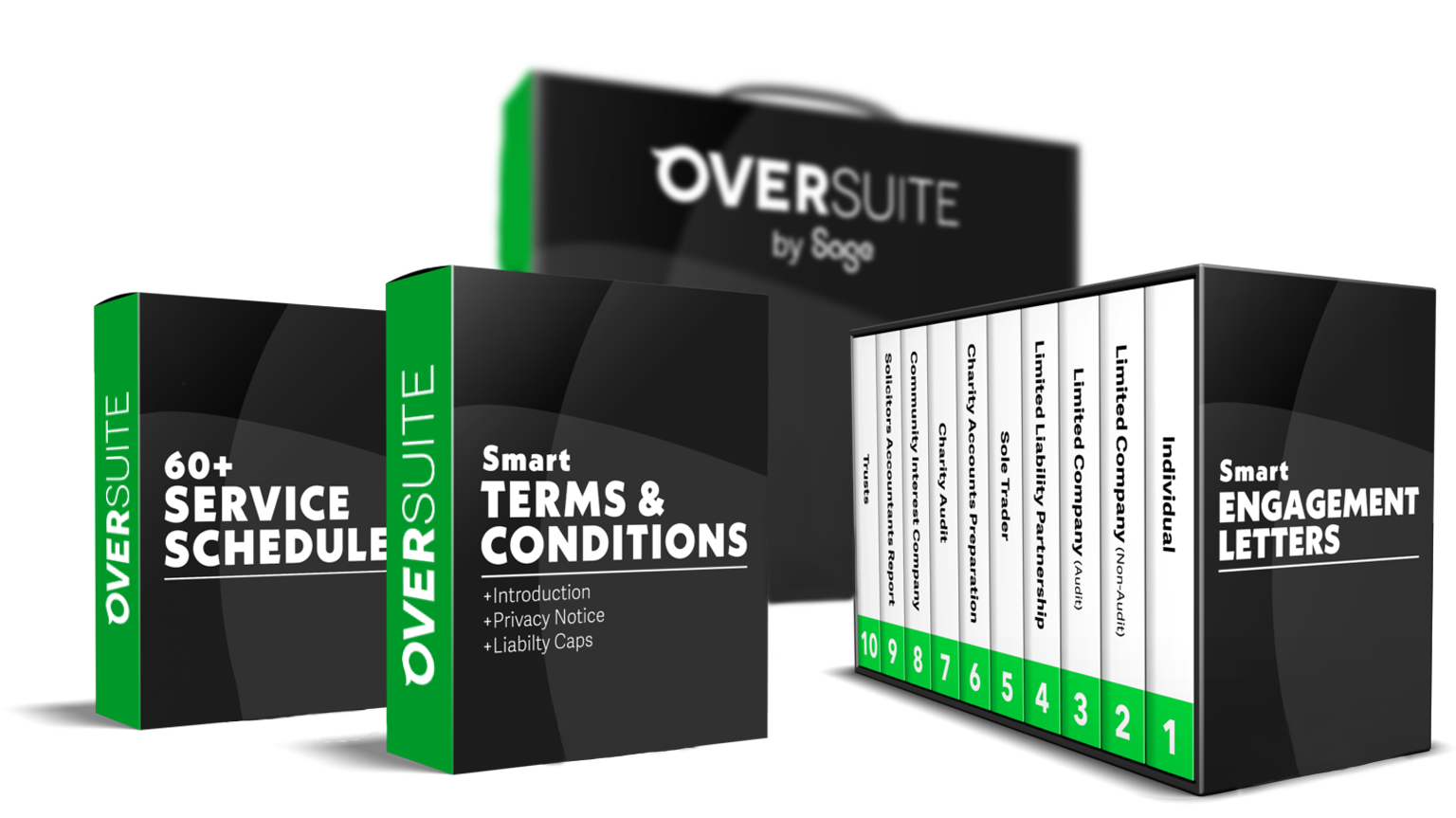Building a library of engagement letters for your accounting practice is hard. They need to be robust to give you the protection you need, should something ever go wrong. They also need to be clear enough so that all parties fully understand their responsibilities.
Accountants typically use a bunch of engagement letter templates, which you have to decipher and correctly assemble into a suite of legally compliant documents. Unless you have a team of experts devoted to this, it’s an impossible task.
Under the pressure to get this right, many firms typically make a few mistakes that aren’t really their fault.
I’ve found those mistakes typically come under one of 5 areas. Understand these, and you’ll understand how you can avoid them.
Key Takeaways:
- Engagement letter templates require too much customisation
- Law firms typically lack knowledge in the accounting industry required for engagement letters
- Overcomplicated documents do fulfil the robustness you need, but they fail on clarity
- A great automating system will generate engagement letters instantly, but quality content must be input in the first place
- In your professional career you will have a complaint made against you by a client at some point. You can’t rely on hope

Mistake #1: using engagement letter templates
Whether you’ve been given a bank of engagement letter templates, or downloaded them yourself, templates typically come in the form of word documents that you’ve got to sift through and decipher.
You’re now expected to be a compliance and legal expert, able to understand how to assemble this documentation correctly.
You’re attempting to bridge a compliance gap in your firm. Engagement letter templates are essentially a set of building blocks, but in order to assemble them in the right way, it’s on you to bring:
- the resources
- the time
- the experience
- the knowledge
The likelihood of you making mistakes is absolutely enormous because it’s such a huge task. And it’s an unfair burden you were given in the first place.
While a whole library of engagement letter templates may look like a great thing on the surface, it becomes a huge problem. To get this right, is really, really difficult.
You must ensure these documents reflect the exact circumstances of your firm and if those circumstances change, then all of your documentation needs to change as well.
Suddenly, if you’re a sole trader and you become a limited company, you’ve got to go back and change all of your documentation. If you get another director, you’ve got to change your documentation. If you start to offshore and outsource work, or you start to use cloud software. If you start to provide investment services, or you start to take commission, again, you’ve got to change all of this documentation.
Mistake #2: using a law firm
Another mistake Accountants make in trying to build out their suite of engagement letters in the first place, is to use law firms.
Law firms are great at understanding law, but they typically don’t understand all the regulations and compliance obligations accountancy and bookkeeping firms must meet.
Even if they do understand them, that regulatory landscape is constantly changing. We need to be looking to the horizon to see all of the changes coming our way, to ensure we’re making changes to your documentation before they happen, not after the fact. Updates are needed regularly.
Yes, law firms can be great to ensure you’re fully compliant and your terms and conditions tick all the boxes. But they can be overcomplicated with legalese, and typically don’t have all the experience they need for the accounting profession.
Mistake #3: over-complicating your engagement letters
The next mistake that firms make is huge. It comes from a fear of wanting to make sure you’re fully protected, which is a real fear. I’ve witnessed many accountants create very, very robust documentation, but in doing so, their engagement letters become extremely overcomplicated.
You end up with something that has every single term you could possibly imagine to protect you against every possible scenario, creating a very lengthy documentation that’s VERY difficult to understand.
Perhaps, you don’t even fully understand them yourself, unless you’re taken through them by an expert.
If you do, which is a great achievement in its own right, the likelihood is that your clients don’t understand everything in there. It’s perhaps unlikely that your team understands it either.
At the end of the day, it’s your team members who are delivering the services to your clients. If you’re going to sleep soundly at night, you need to know that they are fulfilling your obligations.
If you don’t have clarity around all of your engagement letters, it’s likely your team don’t know exactly what they’re meant to be doing and when. What’s more, your clients don’t understand either.
What you end up with is an overcomplicated document fulfilling the robustness you need to have, but it’s failing on clarity. Because we don’t satisfy both of those components, these documents don’t become as useful as they could be.
Mistake #4: high quality automation, low quality content
The next mistake accountants make is, what I call automating garbage. Yes, a great automating system will generate your engagement letters instantly, but what is input in the first place, often isn’t good enough.
We did this in my firm, and realised it was too onerous for us to assemble those templates into usable, effective documents. If you put garbage into the system, garbage is what comes out.
Technology can create a false sense of security, because you fall into the trap of thinking, ‘Great, we’ve got an automated system. Look, this is producing our engagement letters for us.‘
But we don’t dig deeply into whether they’re actually robust enough and whether they’re clear enough in the first place.
Mistake #5: relying on hope
The final mistake I see firms make is over-relying on hope…
They hope that nothing’s going to go wrong.
They hope that their clients are great clients, who will come and chat about any challenges that arise and it’ll all be okay.
They hope their team knows exactly what they’re meant to do and that they do it all the time.
They hope that their clients understand their obligations and they’re going to give you exactly what you need when you need it.
They hope that if the worst were to happen, their engagement letters will easily protect them, that they’re legally robust with everything in there that’s meant to be.
But deep down, they know that’s not going to hold up.
It’s likely that in your professional career you will have a complaint made against you by a client. At that point, you need something far more robust than hope to rely on.
How can you avoid these engagement letter mistakes?
We’ve taken the know-how of leading compliance experts, and built their experience & technical expertise into OverSuite. With simple, known inputs, you can generate your library of smart engagement letters in minutes. They are robust, clear and actively adapt to the changing circumstances of your firm and the nature of the clients you serve, however complex.
Don’t just take our word for it, discover what our users are saying about OverSuite.
Get Your Suite of Smart Engagement Letters with OverSuite
Meet the highest levels of risk and compliance standards with our suite of Smart Engagement Letters that evolve with regulatory changes & are auto-updated for you.






